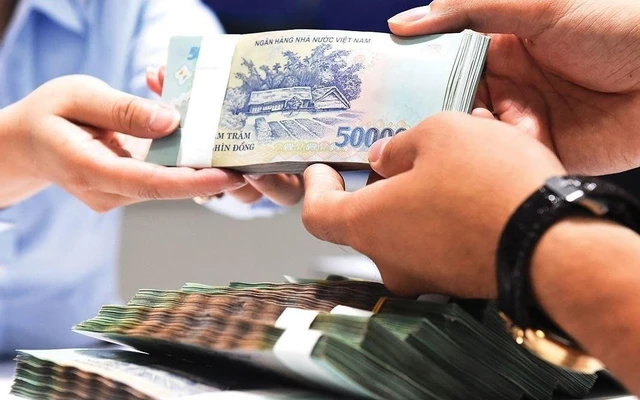According to statistics from the State Bank of Vietnam (SBV), Branch No. 2 (operating in Ho Chi Minh City), as of the end of March 2025, total consumer credit outstanding in Ho Chi Minh City reached VND 1,137 trillion, up 2.3% from the end of 2024. In particular, March 2025 saw a 1.6% increase compared to the previous month.

Mr. Nguyen Duc Lenh, Deputy Director of SBV Branch No. 2, assessed that consumer credit in the area is on an upward trend and is closely linked to positive developments in the economy, as well as the city’s consumption, trade, tourism, and services.
First, in the first three months of 2025, consumer credit in Ho Chi Minh City grew by 2.3%, higher than the same period in previous years (in the first quarter of 2024, consumer credit decreased by 0.9%; in the first quarter of 2023, it increased by 0.7%).
Second, consumer credit directly impacts daily consumption and the lives of the people, and is linked to trade, tourism, and services, accounting for 39.5% of total consumer credit outstanding in the area, an increase of 4.5% compared to the end of 2024. Notably, loans for purchasing household appliances and equipment saw the highest increase, rising by 8.7% from the end of the previous year and making up 15.1% of total consumer credit outstanding in the area.
The growth in consumer credit reflects expanding consumption demands. This development positively impacts production, business, trade, tourism, and services. As a result, the city’s retail goods revenue and service consumption revenue in the first three months of 2025 and April 2025 continued to surge, with a remarkable 28.7% year-on-year increase in retail goods revenue. This is also a driving force for the city’s economic growth in general and consumer credit in particular in the future.
Third, housing loans for consumption purposes reached VND 688 trillion, accounting for 60.5% of total consumer loan outstanding in the area, and increased by 1% compared to the end of 2024. Although the growth rate is lower than in other sectors, the high proportion of this segment in consumer credit means that maintaining a positive growth rate will positively impact consumer credit and benefit the housing market and economic growth, as well as the government’s housing development policies.
These are positive results of consumer credit activities in the area. The monetary, credit, and interest rate policies of the SBV, along with diverse, flexible, and convenient consumer lending products that utilize modern technology applications by credit institutions, have been the driving forces behind the efficient development of consumer credit. They contribute to promoting and enhancing the role of consumption in economic growth in implementing solutions for economic and social development in the banking sector in general and in Ho Chi Minh City in particular.
– 11:54, May 13, 2025
Making Way for 100,000 Affordable Homes
To meet the target of delivering 100,000 social housing units by 2030 as set by the Prime Minister, Ho Chi Minh City is leaving no stone unturned with a slew of initiatives.
The New West Side Story: Binh Chanh’s Rise in the Urban Restructuring Race
The heart of Ho Chi Minh City (District 1 and District 3) is congested, and the rise of new central hubs is inevitable for restructuring this modern metropolis. Following the success of Thu Duc City, Binh Chanh is rapidly establishing itself as the next growth pole, boasting both scale and a visionary development plan.
The Billion Dollar Project in Hanoi: Experts Warn of One Crucial Factor That Investors Can’t Afford to Ignore
“Investing in high-priced land does not always equate to a wise investment decision. Commercial real estate is not a game of emotions; it requires a deep understanding of finance, cash flow management, and a long-term vision.”
A New Urban Area: Binh Quoi-Thanh Da Revitalized
The Ho Chi Minh City People’s Committee has requested that the time frame for preparing the task of adjusting the 1/2000 subdivision planning must not exceed one month. Additionally, the time frame for preparing the proposal for adjusting the 1/2000 subdivision planning should not exceed nine months.





















